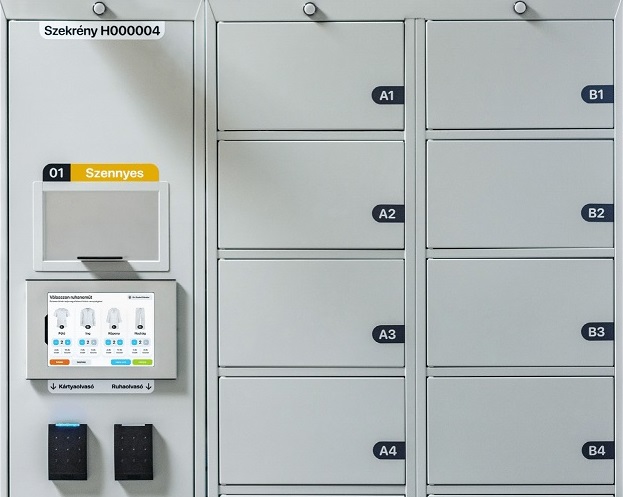The portfolio of B+N Magyarország Kft. has been expanded with a new service: the company has introduced a unique innovation in the hospital in Hatvan. By using so-called ‘smart cabinets’, the employees of the institution can ‘automatically’ have access to their workwear.
The company has recently introduced its new textile tracking system, the so-called ‘smart cabinet’ project in the Albert Schweitzer Hospital and Polyclinic. B+N is responsible for the installation, implementation and operation of the system.
B+N’s ‘smart cabinet’ makes the circulation of textiles between the institution and the laundry transparent and plannable
This project offers an efficient and precise solution to the management of workwear. The distribution of clean clothes and the collection of dirty clothing are managed through intelligent cabinet systems installed at the institution. The system is really easy to use: RFID labels are attached to the garments handled and RFID readers are placed on the shelves. The profile of each employee includes data about the type and size of clothes to be provided. The cabinet has accurate information about the available stocks and continuously records the collection and distribution of clothes. System administration is also automatic.

The dirty linen container, once filled up, automatically sends a message to the service provider which takes the necessary steps to change it. The ‘smart cabinet’ makes the circulation of textiles between the institution and the laundry transparent and plannable throughout the entire lifetime of the textiles.
The innovation of B+N Magyarország Kft., which is unparalleled in Hungary, is of great help for hospitals
This system provides benefits for everybody: the employees can get their workwear in a quick and convenient manner and leave their dirty clothes at the cabinet. The hospital does not need a dedicated staff and room for this purpose and can follow the precise management of textiles easily.
This innovation of B+N Magyarország Kft., which is unparalleled in Hungary, is planned to be used in as many hospitals as possible in the future for the continuous, fast and trackable management of the employees’ workwear.